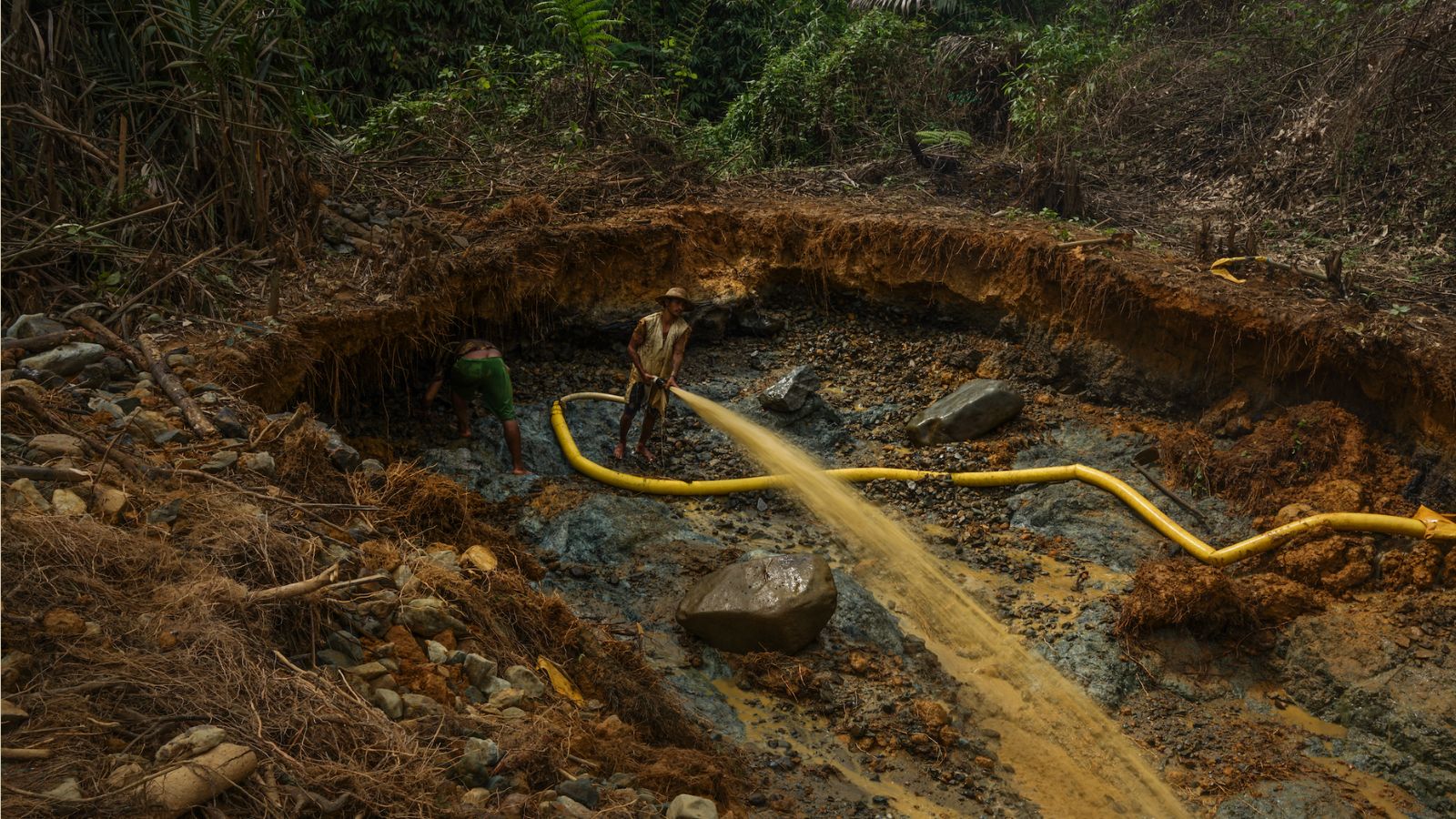Our Rainforest Journalism Fund website is available in English, Spanish, bahasa Indonesia, French, and Portuguese.
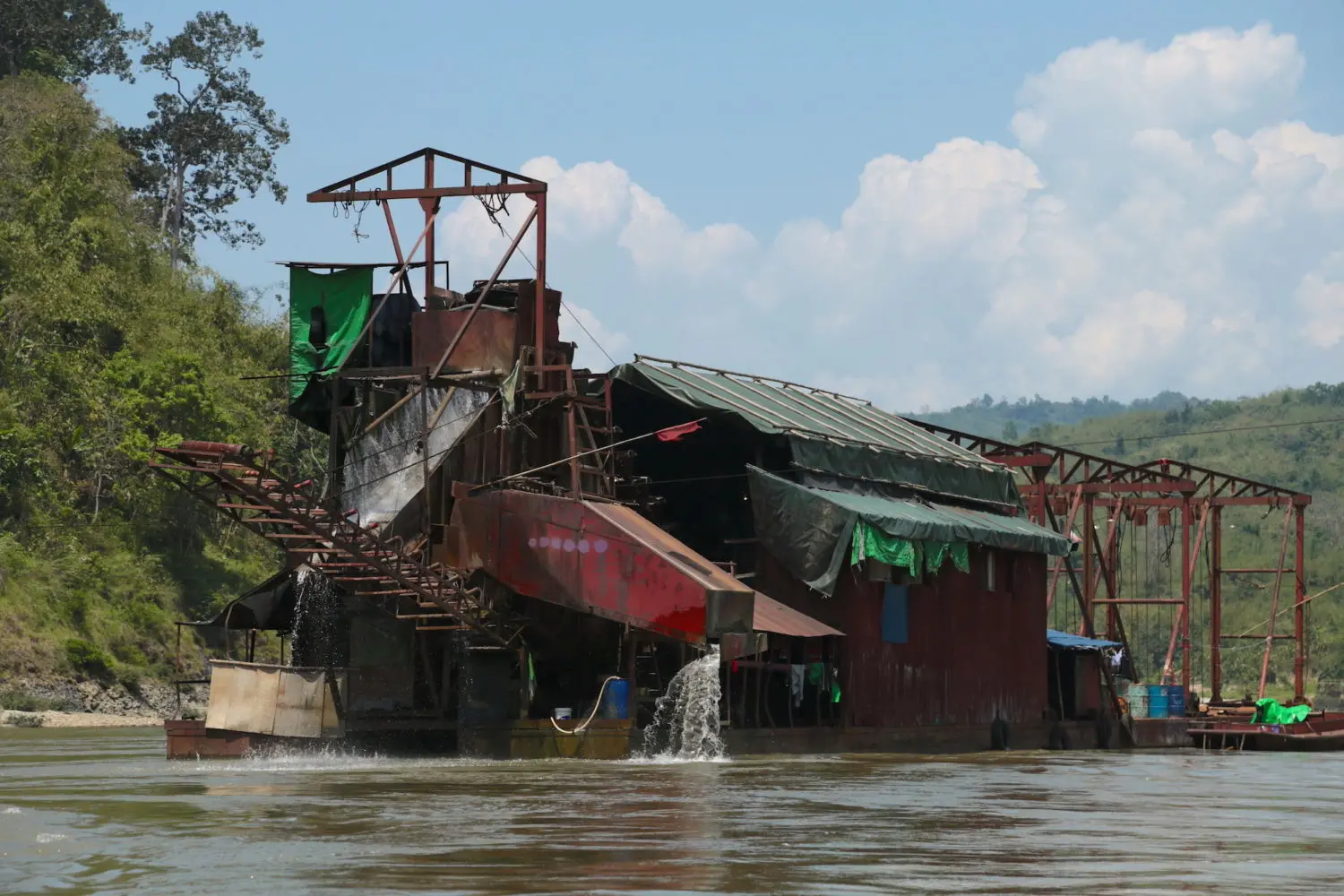
In a village in Kachin State, Myanmar, bordering China’s Yunnan province, a day laborer named Naw had earned just enough in the sugarcane and cornfields to feed his family of six before pandemic-induced border closures left him struggling to find work. A February 2021 military coup sent Myanmar’s economy into a downward spiral, and Naw had to search for new ways to earn an income.
He traveled 60 miles west, passing through verdant forests, rice paddies, and small villages of bamboo houses. Reaching Bhamo, a town on the banks of the Irrawaddy, Myanmar’s longest river, he began mining gold and earning $4 per day. He uses a generator-powered pump to suction up sediment, then sends it through a sluice tray before adding mercury — which he handles barehanded — to extract gold.
Naw estimates he is one of 1,000 people mining gold in Bhamo alone. Other areas across Kachin State are experiencing a similar influx — part of a broader resource grab as Myanmar’s economic crisis deepens, rule of law breaks down, and civil war intensifies in the wake of the coup.
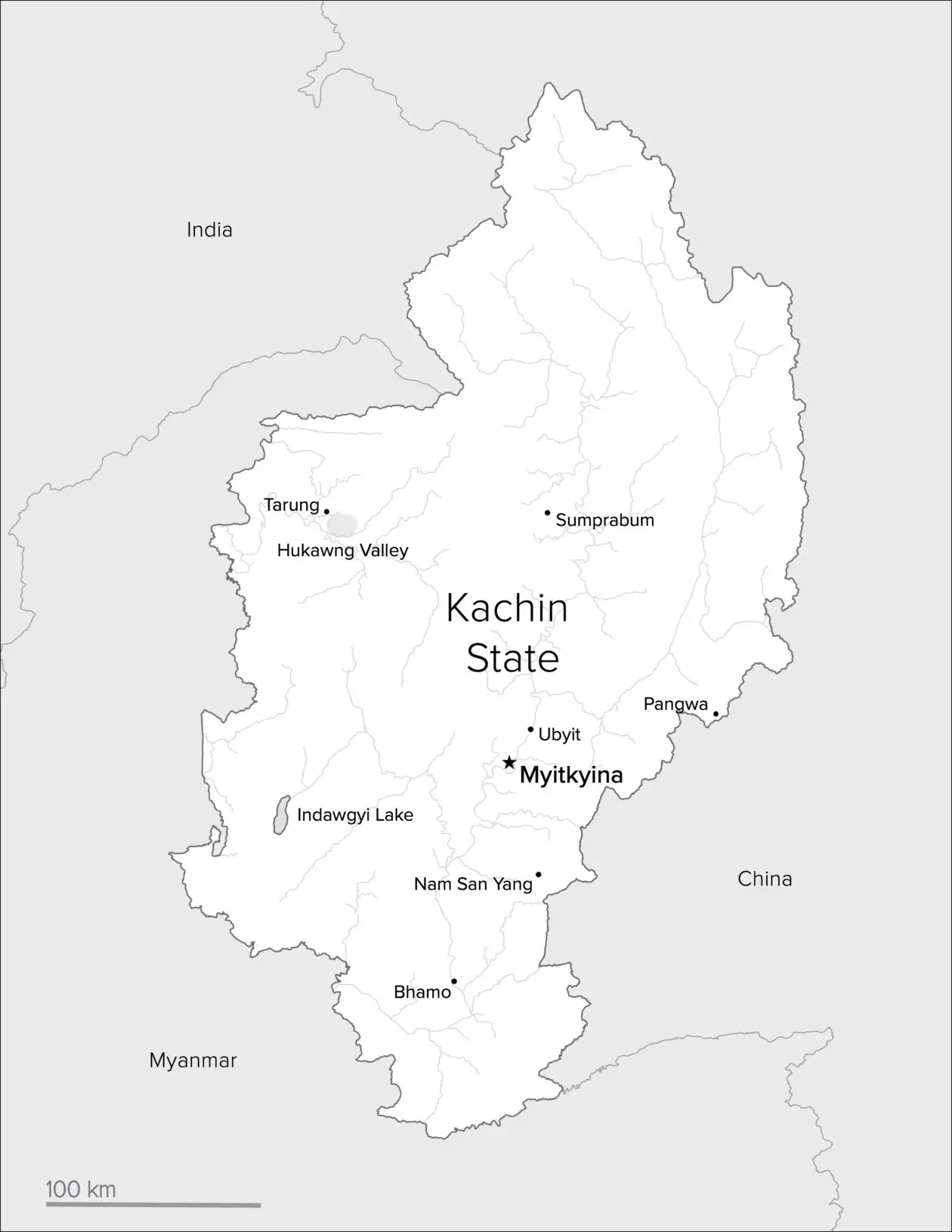

As a nonprofit journalism organization, we depend on your support to fund journalism covering underreported issues around the world. Donate any amount today to become a Pulitzer Center Champion and receive exclusive benefits!
Once-tranquil riverbanks are now cluttered with dredging machines, and the sound of the river’s flow is drowned out by revving engines. Dredging boats crowd waterways, while on land, excavator trucks dig pits into which gold miners blast water to dislodge the earth.
“Gold mining is suddenly popping up like mushrooms everywhere,” said a local environmental activist in the state capital, Myitkyina. Another civil society worker who researches extractive industries in Kachin estimated that gold mining has increased tenfold since last year’s coup, the result not only of an influx of small-scale miners but also larger operations using mechanized equipment. Along with several other people interviewed for this article, the activist and civil society worker requested anonymity out of fear of reprisals from the military.
Residents and activists describe widespread environmental destruction as a result of the gold rush — polluted water, erosion, deforestation, and a loss of farmland — and said it has created tensions between villagers who oppose the mining and those who are mining or who sold their land to miners. “To build our village to a habitable and healthy environment like before will be very difficult,” said a villager from Nam San Yang, which has been heavily mined.
Kachin, Myanmar’s northernmost state, contains some of the country’s most lucrative resources, including jade, rare earth minerals, amber, and gold, in addition to timber. It also is home to the headwaters of the Irrawaddy (also spelled Ayeyarwady) and three areas nominated to be UNESCO World Heritage sites. Gold mining and other extractive industries are reportedly encroaching on these UNESCO sites. The Indawgyi Lake Wildlife Sanctuary, which draws bird watchers from around the world, contains threatened bird species, as well as endemic fish and turtle species. The Hukawng Valley Wildlife Sanctuary, which encompasses a tiger reserve roughly the size of Vermont, also is home to threatened wildlife, including the Asian elephant. The Northern Mountain Forest Complex, one of the largest intact natural forests in Southeast Asia, includes a mountain range with 16,000-foot peaks and threatened wildlife, including the red panda.
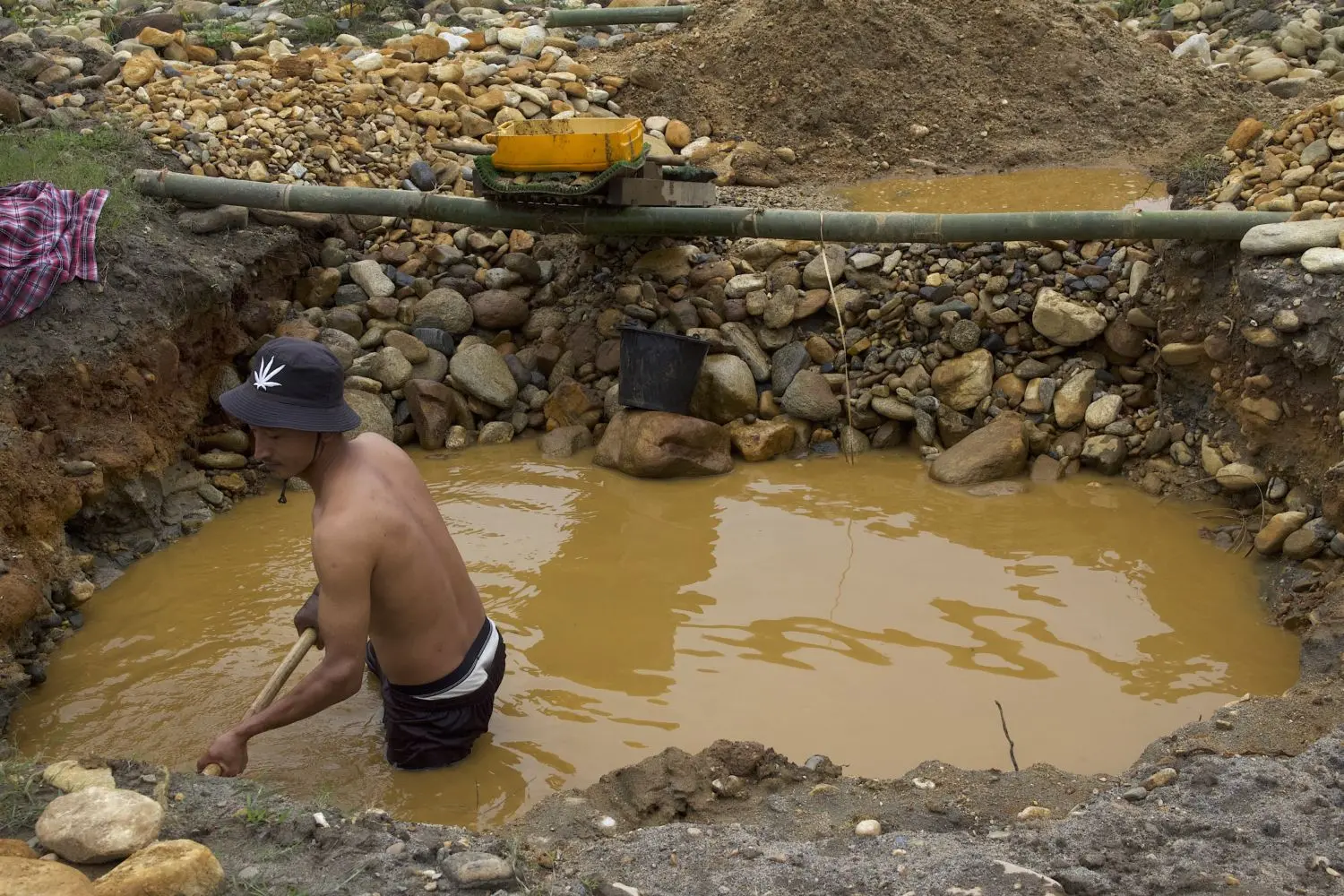
The Kachin people, one of dozens of ethnic groups in Myanmar’s resource-rich border areas, have long made a living by farming, harvesting forest products, and mining with hand tools. “We were taught by our parents that we cannot simply cut trees or kill fish, so that we can maintain our flora and fauna,” said an environmental activist from Kachin’s Sumprabum township. “We know there is gold in the water, but we don’t destroy the river because it is our flesh, blood, and strength.”
In 1962, the military seized power, and over the next five decades excluded local people from participation in land and resource management. “They threatened us with the law and accused us of not having any land rights,” said the activist from Sumprabum.
Inequitable access to land and resources has contributed to decades of civil war along the country’s borders, including in Kachin, where the Kachin Independence Organization (KIO) has been fighting for autonomy for 60 years. Natural resource exploitation has funded both sides of the conflict, while smaller ethnic militias and paramilitary groups are also active in the state’s extractive economies.
Once-verdant mountains became a moonscape of excavator pits and waste heaps.
Kachin’s environmental problems significantly worsened during a 17-year ceasefire between the military and KIO, which began in 1994 and brought large areas of the state under military control. The military granted land concessions to companies favorable to its interests, and the environmental watchdog Global Witness reported that Chinese companies were carrying out “large-scale, unregulated logging and mining operations” in Kachin, with “catastrophic” implications for local communities and the environment.
A 2004 civil society report described a “devastating gold rush” in Kachin. It found that miners commonly engaged in dangerous practices such as handling mercury — a neurotoxin posing serious health risks — barehanded, and burning a mercury-laden amalgam to obtain gold. Miners also waded into mercury-contaminated water bare-legged, and locals ate fish from the same water, the report said. The report also found that gold mining diverted river flows, destroyed riverbanks and riverbeds, caused fluctuating water levels, hastened deforestation, and brought about an “incalculable loss of biodiversity.”
Similar patterns played out in Kachin’s Hpakant region, where the military doled out jade mining concessions, with most of the jade being smuggled to China. Once-verdant mountains became a moonscape of excavator pits and waste heaps, and although hundreds of thousands of freelance miners searched for a way out of poverty, they rarely found it. Landslides claimed lives every year. Logging concessions during the ceasefire resulted in massive deforestation, particularly in areas along Kachin’s northeastern border with China.
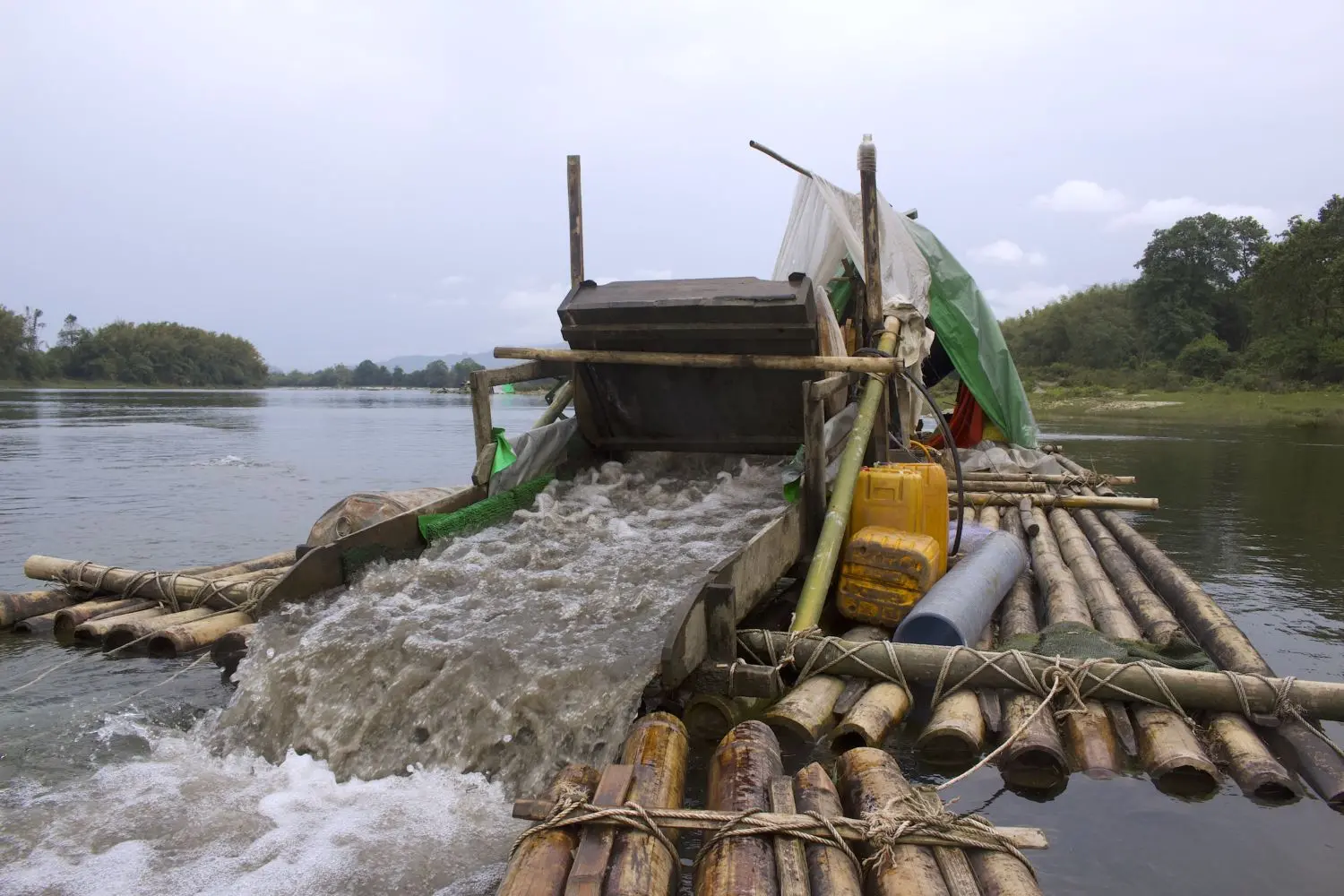
While all of these industries benefited the military, armed groups, Chinese companies, and business elites, local people faced land grabs, social disintegration, and a spike in drug addiction.
Kevin Woods, a research fellow at the East-West Center in Honolulu who has done extensive research on conflict resources in Myanmar, described a close link between deforestation hotspots and areas under the control of the military and paramilitary groups. “These highly lucrative resource deals have lubricated military-aligned political relations and bank accounts,” he said in an email.
When the elected civilian government led by Aung San Suu Kyi came to power in 2016, it took some steps to reform extractive industries during its five-year term, but monitoring and enforcement remained weak. Meanwhile, Kachin’s jade continued to generate billions of dollars annually yet remained mired in corruption.
Although illegal logging slowed, in part due to the government’s seizure of more than 200,000 tons of timber, rare earth mining surged in Pangwa, a remote border area controlled by military-linked armed groups. The risks of visiting the heavily armed area have thwarted efforts to document the industry, but satellite data, local media reports, and interviews by email and phone indicate that many of the rare earth minerals supposedly coming from China are actually mined in Kachin. The past decade’s expansion of rare earth mining in Kachin also corresponds to a crackdown on rare earth mining in China, in part due to environmental harms, which include deforestation and the contamination of water and soil.
“We don’t dare to drink water from the streams,” says a resident in a gold mining region.
As dire as Kachin’s environmental crisis was during the civilian government, however, the 2021 coup caused the resource scramble to accelerate. “The return to direct military rule has reversed course on the limited progress in resource governance reform and civil society’s participation,” said Woods of the East-West Center. “The vested financial interests by the military and its associates in resource pillaging — and the attendant social, political, and environmental implications — should not be underestimated.”
Gold mining, which is broadly accessible and can be done across the state, has boomed. Areas of increased extraction include the confluence of two rivers that form the Irrawaddy, Indawgyi Lake, the Hukawng Valley, and the state’s mountainous northern forests, according to interviews and local media reports. Local sources describe worsening impacts, including rivers polluted with fuel, mining waste, and mercury.
“Before, we drank water from the Tarung stream,” said a woman in the Hukawng Valley, who asked not to be identified. “It was fresh and sweet. But now, people dig wells for drinking water. We don’t dare to drink water from the streams … They are mining with heavy machinery, so animals and fish are becoming scarce.”
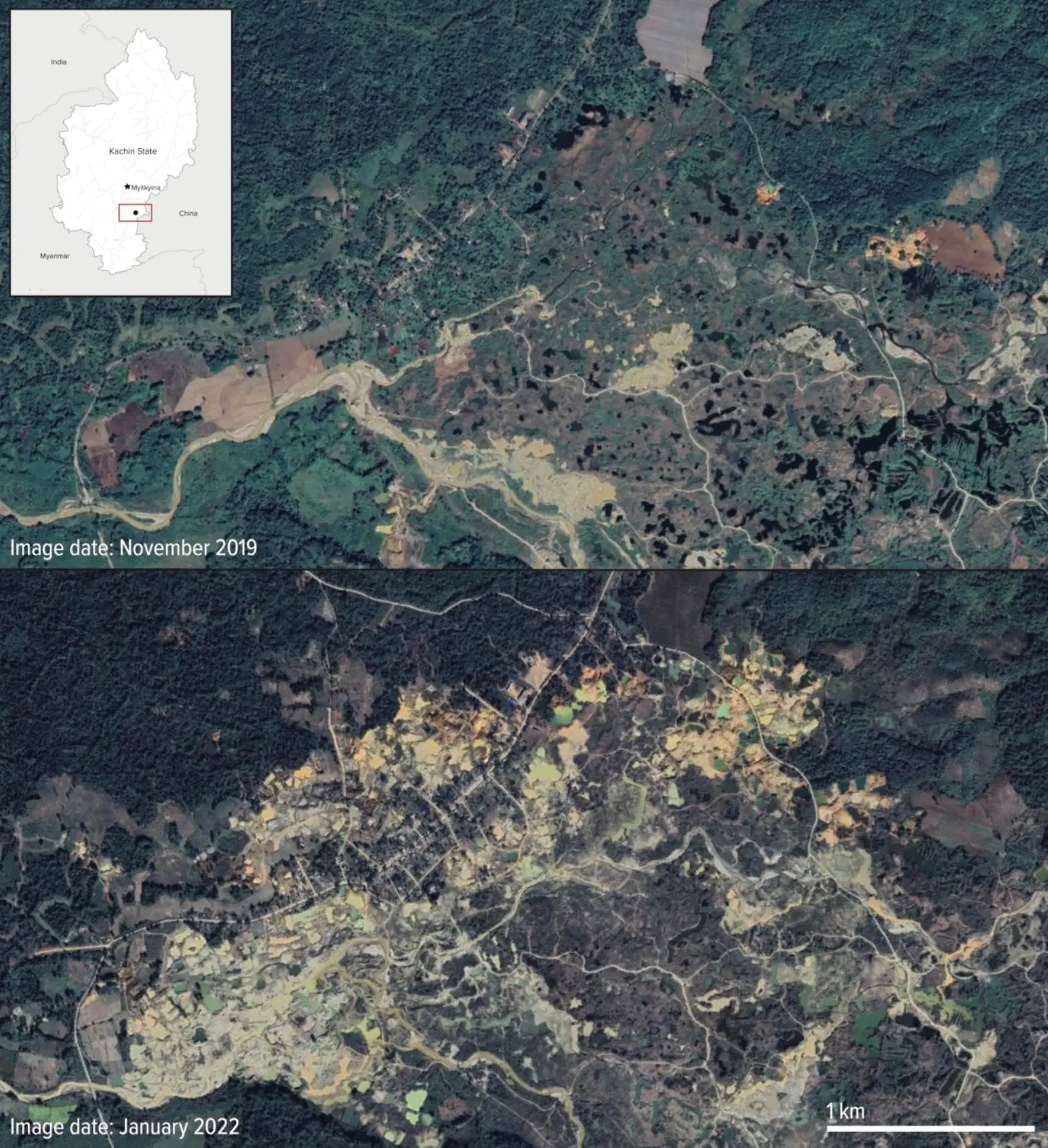
The activist from Sumprabum said that the increase in gold mining has affected people’s subsistence living. “In the past, there were a lot of fish in the river,” he said. “But now, [gold miners] are digging out soil and rocks, and many living creatures are having difficulty surviving.”
People living along the Irrawaddy fear landslides and flooding due to erosion caused by mining. They also lament the destruction of the river’s shores, where locals used to relax and picnic but now fear their children will fall into mining pits. “Before, when we went to the riverbank, we felt the beautiful view and nature … Now, there is a lot of gold mining waste, stones, and [mining] pits,” said a resident of Ubyit village, near the Kachin capital, Myitkyina.
In the village of Nam San Yang, mechanized gold mining has been encroaching on homes and farmland since 2013. Its dramatic expansion after the coup has dimmed prospects of return for most of the villagers, who are among around 100,000 people living in displacement camps since 2011 because of fighting between the military and the KIO.
“Before [2011], when we needed food, we went to the stream to catch fish,” said a villager who recently went back from the camp to try to oppose the mining expansion. “Now, there is no water for the fish. We also have no more land for our livestock … Farmland is just a word for us now.”
“The big companies pay [the military] well, so they aren’t stopped or arrested,” says a small-scale gold miner.
The situation has also damaged communal trust. “The big social issue is between people who want to sell their land and people who don’t,” he said. “The relationship is broken because of that.”
Local sources said that although villagers have been trying to resist the gold mining surge, including by directly asking gold miners to stop, they face little institutional support. “This kind of issue should be solved by the government, but in the current situation, it is like there is no government,” said a resident of Ubyit village.
One reason for this weak response, locals say, is that the military, KIO, and other armed actors routinely tax gold mining operations. “The armed groups aren’t taking action against gold mining because all of them are involved in this business,” said a civil society worker in Myitkyina.
The military has confiscated equipment and arrested gold miners in some areas, but local sources say these actions have been superficial. “Whenever soldiers come, we leave the machinery and run … Everyone comes back to mine gold when the soldiers are gone,” said Naw, the gold miner in Bhamo. “The big companies pay [the military] well, so they aren’t stopped or arrested. Only small-scale gold miners who cannot pay are arrested.”
Ting Sau, the military-appointed Kachin State minister of natural resources and environmental conservation, did not reply to a request for comments.
The KIO banned gold mining in its territories in December and has since stopped gold mining in Nam San Yang village, which is under partial KIO control. Colonel Naw Bu, the KIO’s information officer, said during a phone interview that the KIO was investigating the few remaining gold mining operations in territories where it exercises control and that it is prepared to lose tax revenue as a result of any crackdown. But he added that the coup and ongoing fighting against the military has hindered the KIO’s ability to address gold mining in other parts of the state.
Several local sources expressed doubt about the KIO’s political will, however. “The reason our village has been destroyed like this is that [the KIO] doesn’t take serious action against gold mining — they only stop it for show,” said a villager from Nam San Yang.
The activist from Sumprabum also said he has little hope that the gold mining boom will be brought under control. “Only two groups are benefiting from [gold mining]: wealthy businessmen and those who use the name of the government,” he said. “When they destroy the natural environment and resources, we feel like they are cutting off our legs.”
- View this story on The Third Pole




